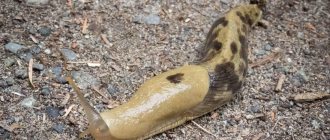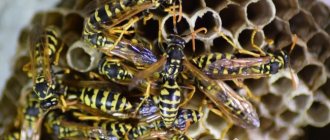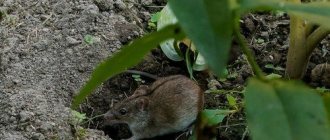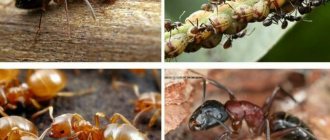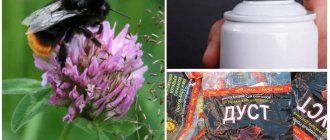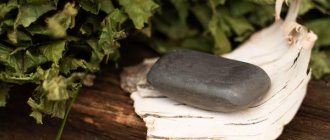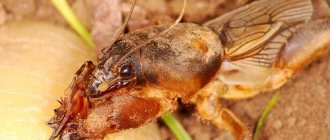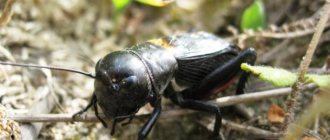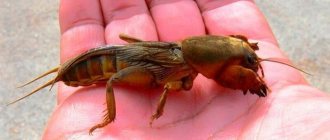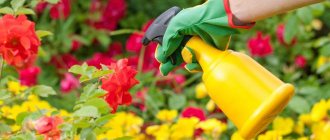Description of the slug clan
- Fact:
It is not so easy to detect the harmful guests themselves, but traces of their presence remain everywhere. - Fact 2:
They are awake at night, during the day they hide from the sun’s rays under the leaves of plants, and in the morning one can only lament the results of their feasts. - Fact 3:
Slugs are omnivores and do not disdain almost any plantings in the garden. - Fact 4:
Slugs have gained great popularity in the pet market.
An unpleasant, but familiar situation to many owners of personal plots: you go out in the morning to your caressed and well-groomed green “kingdom”, and it’s as if sloppy and impudent guests are running the show. The berries are bitten, the fruits are undermined, the vegetables are also damaged. And on top of that, all the berry, fruit and vegetable deliciousness is smeared with a nasty slimy coating. Congratulations! Your site was chosen by new residents whom you did not invite, but they came and had a good feast at night.
This is a common practice among slugs. They are awake at night, during the day they hide from the sun's rays under the leaves of plants, and in the morning one can only lament the results of their feasts. It is not so easy to detect the harmful guests themselves, but traces of their presence remain everywhere. These insects are omnivores and do not disdain almost any plantings in the garden. There are a huge number of varieties of slugs, but there are several species that are the most numerous and famous.
Garden slug
Another name for him is Naked. The elongated body of the slug is small (25-30 mm) and wet all the time, as it secretes lubricant (mucus) around the clock. He is also able to change the shape of his body by contracting his muscles. This species has an unremarkable, inconspicuous color:
- Grayish.
- Yellowish.
- Faded brown.
In the mouth there is a tongue with rows of many teeth, resembling a grater. In the front part of the body there are tentacles, and on them are organs of vision.
You can meet the garden slug throughout European territory. The diet includes any fruits, vegetables and berries, but they are especially loved:
- Tomatoes
- Strawberry
- Strawberries
- Cabbage.
The slug eats stems, leaves, and fruits. In the latter he makes holes and passages, the plants begin to rot and lose their marketable and aesthetic appearance.
It is most active if the weather is damp and gloomy, at night and in the pre-dawn morning hours. It hides from the burning rays of the sun under soil lumps, in lowlands with high humidity, in places shaded by plant leaves.
In areas where the humidity level is constantly high (near rivers and places where groundwater is on the very surface), they breed especially a lot. A female slug lays up to four hundred eggs at a time. After overwintering underground, young individuals come out with the arrival of spring.
Slug diet
On the menu, the mollusk prefers the healthiest and strongest plants. In the oral organ it has a jaw, equipped with a sharp edge with a chitinous coating and a tongue, with chitinous grater teeth (scientifically called radulas). The slug grinds food with its jaws and leaves clearly visible cuts with a smooth edge on the fruits.
The pest's taste preferences include mushrooms, weed plant remains, juicy pulp of garden crops, berries, root vegetables, and vegetables. In addition to destroying the crop, the mollusk is also capable of “rewarding” what it did not eat with mold, bacteria or viruses. Some varieties of the parasite are intermediate hosts of worms that parasitize poultry. That is why you should never feed found slugs to chickens, ducks, geese and other homestead animals.
Even if a slug does not damage the plant, but simply crawls over it, then this will also lead to nothing good. Firstly, the slime trail left behind the mollusk contaminates the plant, clogs the pores and provokes rotting. Secondly, it’s simply unpleasant, and even after washing, it’s unlikely that anyone will want to eat such a vegetable “treated” with slugs.
The slug loves some crops especially tenderly (can be used to make bait):
- Cabbage.
- Dandelions.
- Salad (until the arrow forms).
- Strawberries.
- Woodlice grass and shepherd's purse.
- All cruciferous vegetables (except mustard).
naked slug
This is not a very large representative of the slug family, 60-70 mm, and the most ardent supporter of vegetable gardens and gardens. It is this species that is most common on farmland . It eats absolutely any plantings. His menu of preferences includes more than 160 cultures. The slug's appearance is inconspicuous. The body may have a brownish, grayish or beige tint with white or yellow splashes.
This species secretes a lot of mucus to lubricate the body, much more than other species. Its secretions are so abundant that slimy paths remain in the places where the slug crawls. The naked species is widespread throughout Europe, due to its great fertility.
Slime[ | ]
Slugs produce two types of mucus: one that is thin and watery, and one that is thick and sticky. Both are hygroscopic. Liquid mucus spreads from the center of the leg to the edges. Thick mucus unfolds from front to back.
Mucus is very important to slugs because it helps them move and contains fibers that prevent them from sliding down vertical surfaces. The mucus also provides protection from predators and helps retain moisture. Some species use mucus cords to prostrate themselves on the ground or temporarily suspend themselves during mating.
Netted slug
This mollusk is small, up to 30 mm, and is colored quite specifically. The main background is beige, with a mesh pattern of thin dark stripes drawn across it. The mesh is especially pronounced on the dorsal part and mantle. The tentacles are usually monochromatic and black.
They inhabit the territory of Eastern Europe, including the Russian Federation and the CIS. It does not favor forests, nor areas with lush shrub vegetation, but garbage dumps, fields, meadows, and vegetable gardens are just right for it . The mesh type is called the most harmful. Its activity leads to significant crop losses, especially in cabbage plantations. It renders the heads of cabbage completely unusable due to numerous gnawed internal passages. If the summer is rainy, it may invade winter crops.
Great European slug
This species is one of the largest. The mollusk can grow up to 15 cm in length. In addition, the European slug has an extraordinary appearance: its coloring is similar to that of a cheetah, the same light background and black spots.
The big slug is lazy as hell. He really doesn't like movement and changes in his habitat . Having settled in a greenhouse or cellar, he will spend the rest of his life there. He is unpretentious in his food preferences and eats everything. whatever comes to hand, including mushrooms and roots.
Sense organs[ | ]
Like snails, most of the slugs' sensory receptors are concentrated around the head. Nerve nodes, or ganglia, process information received by two pairs of tentacles. The lower, shorter pair are sensory tentacles that are used as an organ of smell, touch and possibly taste. The upper, longer pair are the tentacles of vision (or optical tentacles), sensitive to light and odors. Although slugs cannot distinguish colors, they can easily distinguish light from dark.
Slugs have 100 - 5000 photosensitive cells, each surrounded by many pigment cells. There are a large number of microvilli on the surface of photosensitive cells. It is believed that these are the light-sensitive areas of these cells. The lobes of the mouth can act as an organ of touch, distinguishing between different surfaces. When a slug loses one of its tentacles, it grows back. For example, in representatives of the species Arion ater
it takes 1-2 months.
From the head, nerves run along the entire body, both to the leg to control movement and to the digestive system.
Orange (brown) slug
It is considered medium-sized, 70-80 mm. It has an orange, rusty or brown body with folds and wrinkles. But the mantle, which occupies a third of the body, is smooth. This variety is adapted to cold weather, therefore it inhabits the European north and all regions of Siberia, choosing forests of any type (coniferous, mixed, deciduous). Sometimes it is found in the territories of old cemeteries, where there are a lot of tree plantings or unimproved park areas.
Nocturnal, awake from sunset to dawn. It feeds on carrion, rotten roots, mushrooms, and fallen leaves. In garden plots located near forests, it will definitely find a place to destroy plantings of cabbage, lettuce and other vegetable crops.
Large roadside (leopard) slug
One of the larger species. Wrinkled, rounded body up to 200 mm long with a pointed rear end. The background color is light, from pale gray to ash chestnut, with black spots, like a leopard.
The homeland of the roadside mollusk is Europe, especially its Central and Northwestern parts . The main feature of the species is its unusual mating method. Sexually mature individuals are attached to a tree or any support with the help of the same irreplaceable mucus, formed into a thick, strong rope. On such a “swing” slugs hang as if floating in the air.
Slugs in the garden, how to get rid of them using folk remedies?
It is hardly possible to completely clear your beds of slugs in a short time using mechanical means. But every summer resident is capable of controlling their numbers and preventing blatant sabotage, using exclusively environmentally safe methods of control.
Among them, universally tested by gardeners:
- Artificial barriers for slugs on the soil surface from scattered pine needles, crushed nut shells, river shells, eggshells, stone chips, superphosphate granules, wood ash, cat litter. Slugs cannot overcome wounding, caustic and too dry surfaces.
- Scattering traps in the form of watermelon and citrus peels, pieces of boards and slate, cabbage leaves in the evening. And the morning collection with the destruction of the pests hiding under them.
- Late evening watering cabbage heads with hot water from above. Temperature is about 40 degrees.
- Laying out young nettle shoots cut before flowering in the rows.
- Evening spraying of plants with hot infusions of hot pepper or mustard - 1 tbsp per glass of water. l.
- Using the smell of coffee and coffee grounds to repel.
- Polyethylene film between rows. Before the morning, the mollusks will crawl under it, and during the day they will die from overheating under the sun's rays.
- Arrangement of grooves in front of the beds filled with tobacco crumbs, mustard powder or ground red pepper that cause burns to shellfish.
- Collect slugs using tweezers in a saline or soap solution, where they quickly die.
Beer traps and repellent scents
Craftsmen have long noticed how slugs are attracted to the aroma of beer. Beer diluted with water is used to fill traps made from cut-off plastic bottles, which need to be buried a little into the ground so that the edges of the improvised containers do not rise too much above the soil.
Photo: https://ziz-fackt.ru/wp-content/uploads/2016/09/boremsya-so-sliznyami2.jpg
The slugs that get caught in them will no longer be able to get back out. There they drown and die. Instead of beer, you can use milk, which also attracts pests with its smell.
Clams really don’t like the smells of garlic and aromatic herbs and seasonings: coriander, dill, basil, parsley. And medicinal plants - sage, tansy, lavender, rosemary. They can be planted between vegetable plants and next to strawberry beds to prevent slugs from spoiling the berries.
Spray solutions
For spraying, you can use an infusion of 3 medium onions, crushed together with the husk, in 3 liters of water. Or a solution of ammonia - per 10-liter bucket of water - 4 tbsp. spoons. Or a solution of 2 cups of table vinegar in a bucket with 10 liters of water.
Another effective method proposed by inventive gardeners is to dust plants, especially cabbage, which slugs are very keen on, with dewy dry wood ash mixed with hot pepper powder, fine Extra salt and mustard powder. For a kilogram of ash - a tablespoon of each component.
Among the ready-made preparations for slugs, you can choose the least toxic ones. For example, granules or powder of this substance made from aluminum sulfate, which does not pose a danger to pets and people.
Next, we recommend watching a video about how to quickly and efficiently remove slugs from the garden:
Red triangle slug
This fellow belongs to the exotic species. Its homeland is Eastern Australia. Its appearance is quite different from other species:
- There are only 2 tentacles on the body (the others have 4).
- Bright, noticeable color (pale pink, white, red, olive, cream).
- A clear purple robe in the shape of a triangle.
The dimensions are large enough to examine the mollusk carefully, 14-15 cm. Like all slugs, it loves moisture and settles in the shady bushes of gardens and forests. Very often he strives to get into a residential building, or rather, a bathroom. It lives there, feeding on mold. In the wild, it is capable of eating lichens on trees, especially eucalyptus trunks.
Great spotted slug
It grows up to 13 cm in length and is completely covered with small black dots on the mantle. The oval body is decorated with longitudinal dark stripes. The creature is quite thermophilic, so it prefers to live in southern European regions and the territory of Asia. In areas with colder climates it can live exclusively in greenhouses and greenhouses. Loves to eat mushrooms (champignons are a special love) and various vegetables.
Since it has a considerable size, it causes no small harm. The life expectancy for a mollusk is impressive - 3-4 years .
banana slug
It is enormous in size, only slightly inferior to the giant representative, as much as 25 cm. A distinctive feature of the banana clam is its color . Bright, yellow (less often green or white), plain. Only sometimes with dark dorsal markings. The upper horns are equipped with visual organs, and the lower ones with olfactory organs.
The banana species inhabits North America, from Alaska to the Pacific coast. Despite the name, the slug does not eat bananas, but mushrooms, rotting grass, lichens and animal excrement. Changes color depending on the composition of the diet.
Upon fertilization, the female lays up to 75 eggs, which overwinter in a dark, damp place. Adults are also dormant during periods of dry climate and high temperatures. Regularly releasing lubricant prevents the mollusk from drying out during hibernation.
Big black slug
This is the largest mollusk from the slug family existing on the planet. The length of its body is 30 cm. According to the name, this species is coal-black, with a black mantle, only along the edges with a small inclusion of small light dots. The lower part (sole) is two-tone: black center and gray sides.
The black giant's homeland is Europe (mainly Central and Western). In the northern parts it can only survive in greenhouse conditions . Egg laying up to 100 eggs.
The diet is mushroom, don’t mind eating vegetables. If there is no usual food, it is capable of eating lichens. Gigantic size means a corresponding appetite. Therefore, the damage from the mollusk is colossal.
forest slug
Interesting representative. During the biological cycle it reaches 15 cm, and is able to reproduce at only 3 cm in length. Young animals have a chestnut color, which changes as they grow older. The older generation has a wide range of colors: from milky to anthracite.
Eats everything: mushrooms, carrion, plants, both living and rotting . Great Britain, Germany and Ireland have included the forest slug in the Red Book due to the small number of the species. The general distribution area is extensive:
- British Isles.
- Northern Europe.
- Pacific Northwest Coast.
Common mistakes: what not to use
The first instinct is always to place traps and bait where slug and snail damage is most severe and where the plants are most valuable. But be careful. The enticing scent will attract slugs from all over your garden, and along the way to the desired treat are delicious, succulent plants that just need protection.
Plants are sprayed with a solution of mustard powder early in the morning, in the evening after sunset or in cloudy weather, because in bright sunshine the moisture quickly evaporates, and the mustard remaining on the leaves can cause burns.
Red slug
A bright colorful representative of mollusks, ranging in size from 10 to 18 cm. It can be a rich brick color, yellow, green, black. In almost all countries of its habitat it is listed in the Red Book as a rare species. Distribution area:
- All parts of Europe except Northern.
- North America.
It always coexists with humans, populating fields, orchards, and vegetable gardens. Sometimes lives in forest areas, but only near human presence.
Smooth slug
A small mollusk, only 2.5 cm. The cylindrical body with tapered ends is always one color: brown, black, red. Resident of the European part of the continent, including the CIS territories. Loves marshy areas or the proximity of bodies of water of any origin. It is more moisture-loving than other species and is adapted to cold weather.
In the wild, it eats mushrooms, rotting plants, and berries; it is dangerous to humans due to its proximity due to its addiction to greenhouse crops, which it greatly harms.
Sources[ | ]
- Ruppert E. E., Fox R. S., Barnes R. D.
Lower coelomic animals // Invertebrate Zoology. Functional and evolutionary aspects = Invertebrate Zoology: A Functional Evolutionary Approach / trans. from English T. A. Ganf, N. V. Lenzman, E. V. Sabaneeva; edited by A. A. Dobrovolsky and A. I. Granovich. — 7th edition. - M.: Academy, 2008. - T. 2. - 448 p. — 3000 copies. — ISBN 978-5-7695-2740-1. - Big encyclopedic dictionary "Biology" / ed. M. S. Gilyarov. M.: Great Russian Encyclopedia, 1998.
Red roadside slug
The people call it Spanish or Lusitanian. Quite by accident it was brought to the territory of Russia . The main habitat is European regions with a warm climate; Spain and Portugal are considered their homeland. The dimensions of the wrinkled body are average - 90-110 mm, rarely growing up to 200 mm.
The main color is uniform, including the color of the mantle. They come in orange, red, brick. The red species is hermaphrodite, and very fertile. During mating, mutual fertilization occurs, on the 5-6th day oviposition of 350-400 eggs occurs, after 14-15 days the appearance of new individuals. They become sexually mature after a couple of months.
They eat any vegetation: berries, fruits, flowers, vegetables, mushrooms.
Field slug
A small mollusk 3-4 cm in size, with a nondescript, inconspicuous color: from pale gray to faded chestnut. The fusiform body is narrowed at the ends. Inhabits all of Europe along forest edges and meadow lowlands with the obligatory humidity of the territory. A frequent visitor to gardens, fields and orchards.
My favorite delicacy is strawberries. From the rest of the diet: young shoots of plants, vegetables, fruits, foliage.
Ways to fight
You can get rid of slugs in your garden using both pesticides and more humane methods.
- Chemical preparations are recommended for use in highly contaminated areas. It must be borne in mind that insecticides will not help, since mollusks are not insects. You'll have to spend money on special tools. “Predator”, “Anti-slug”, “Thunderstorm”, “Slug-eater” help well.
- If you plant plants around the perimeter and inside the area whose smell cannot be tolerated by pests, then you don’t have to worry about their invasion. Onions, garlic, marigolds, basil, mustard, and creeping clover have such abilities.
- Purchased and homemade traps will help reduce the number of individuals. To do this, pour beer or kefir into a jar and cover it with earth. There should be enough liquid to drown the pest.
- Collecting shellfish by hand at dawn is an ineffective but least expensive method. It can give results if there are few slugs.
- Folk remedies take advantage of the vulnerability of gastropods. Apply slaked lime and copper sulfate, applying them along the perimeter of the site.
- Agrotechnical practices are aimed at creating unfavorable conditions for the life of pests. They include draining the area, timely weeding, and removing debris.
Cabbage slug
With relatively small sizes (30-40 mm), they cause great damage to cabbage plantings. Having settled inside the head of cabbage, the mollusk begins to gnaw the passages up and down, not limiting itself to just damaging the outer leaf. The color of the body and mantle is the same, brown or brown, dark spots of different sizes are possible without a clear color transition. The color of the horns and head is slightly darker than the body.
Habitat throughout Europe, except for the northernmost regions. The deficiency of your favorite cabbage as food is successfully compensated for by mushrooms, vegetables and leaves.
Manual collection
If there are only a few shellfish, you can try to collect them by hand and then destroy them - for example, in a concentrated saline solution or vinegar. The most effective method is to collect by hand late in the evening at dusk or early in the morning (when slugs are active) and destroy the slugs using a shovel or some other sharp object or by placing them in a 10% solution of table salt for one day.
The Spanish slug uses dead or wounded fellow species as food. Therefore, dead slugs can be left to attract other individuals in a certain place, but in this case this place must be re-examined. If slugs are destroyed before July, they should be buried in the ground. If slugs are destroyed in August or September, in order to prevent their eggs from entering the environment and the further spread of this species, dead slugs must be burned or placed in a solution of table salt.
Slugs as a pet and other benefits
Yes, yes, imagine that the fashion for keeping exotic pets has not bypassed this mollusk. Slugs have gained great popularity in the pet market . These horned creatures live in apartments as pets and even appear as characters in computer toys and works of art. For example, there is the game “Royal Slug in Terriac,” and in the books about the famous Harry Potter, the Horned Slug is used to make a magic potion.
This is how it happened that the enemy of gardeners and gardeners became loved by people far from hobbies of plant growing. And yet, the slug is a pest, although sometimes quite attractive in appearance and unusual in size.
Pests or helpful helpers
The answer to the question is ambiguous, because animals can cause significant damage and at the same time improve the structure of the soil. But most often, slugs in the garden are a real problem, because:
- They develop quickly and become ready to reproduce
- One individual lays several dozen fertilized eggs at once
- Their structural features make them hermaphrodites, so there is simply no shortage of females or males
Important! If you don't want to allow slugs to thrive in your garden or vegetable garden, monitor the situation and, if necessary, take measures to repel the pests or reduce their population.
Now you know what slugs look like, how they differ from snails, how they feed and reproduce. These are truly unique creatures of nature, whose lives are unusual and interesting.
